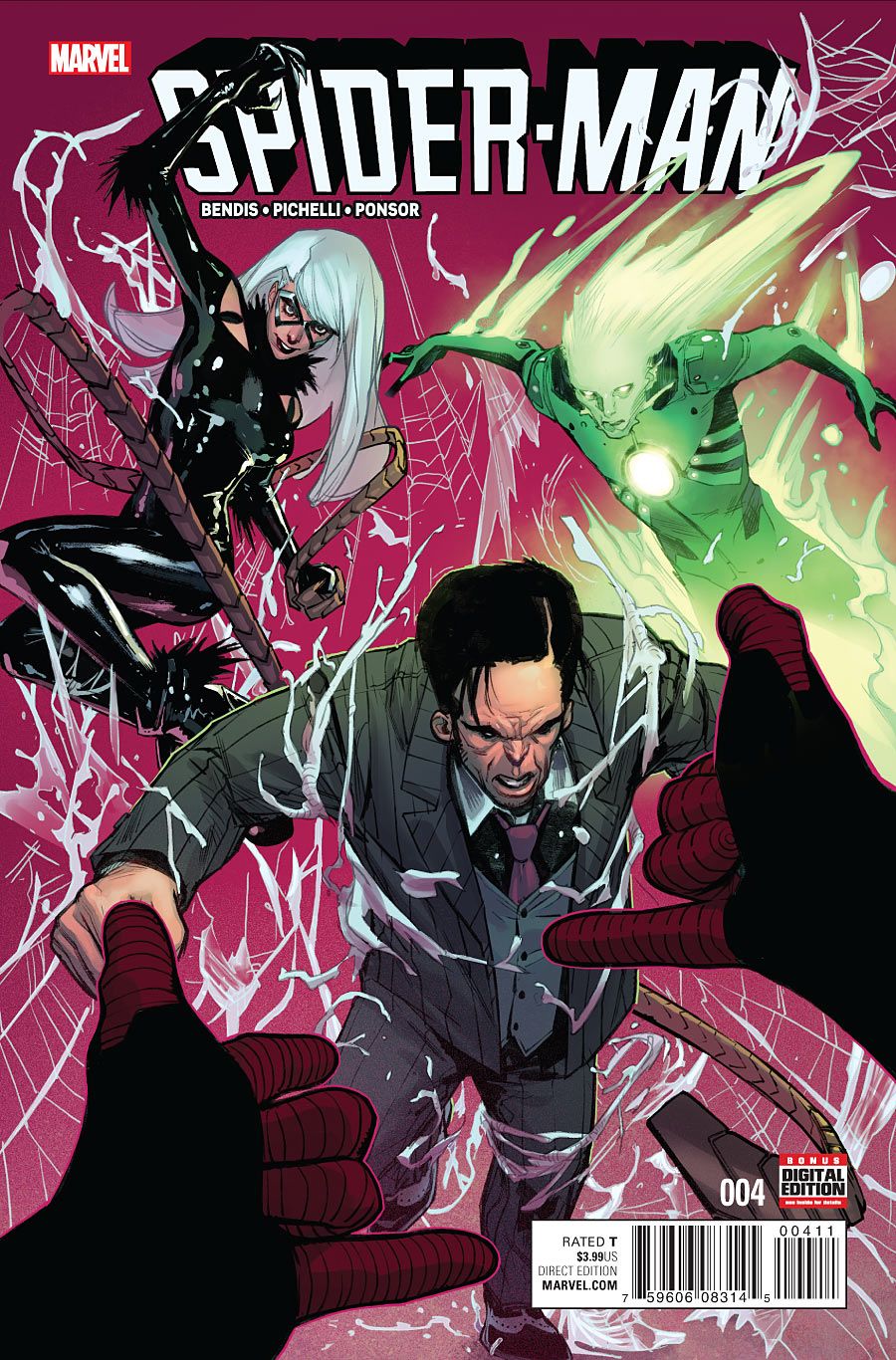In "Spider-Man" #4, Brian Michael Bendis and Sara Pichelli give us a big old character scene that underlines why Miles Morales is so important to the growing mythos of the Spider-Man and builds off his excellent relationship with his best friend Ganke.
Miles would not be the Spider-Man he is without his best friend. Ganke has been Miles' cover, his sympathetic ear and his problem solver throughout the character's history. Rarely, though, has he had the chance to revel in something just for himself. Most of his joys (LEGOs aside) have been seen through the lens of Miles' mask, but now Bendis gives Spidey's pal someone of his own to look up to with Goldballs ploinking his way into the book. Miles and Ganke have a teenage "you don't know what it's like to be me" back-and-forth that spills out of this turn. Props to the writer for using this to drive both points of view and show how diversity really is (gasp!) diverse. Though they are best friends, they'll truly never know what it's like to be the other person. Miles sees Goldballs as a danger; Ganke sees him as a hero. Miles is annoyed; Ganke is in awe. Miles is tired of being racially profiled; Ganke is tired of being profiled by weight. They're both right, but -- instead of agreeing to common ground -- they simply dig their heels in harder on their own side of the argument.
Moments like these are what make Bendis comics so great. This is what teenagers do: they don't listen. They can't see the world beyond their own nose. Their attitudes feel authentic and remind me of my own adolescence. This eventually leads to a shocking turn in which Ganke casually hands over Miles' secret to Fabio Medina, his favorite superhero. Even Fabio is surprised by Ganke's actions, but it's the build and the intense personal nature of the discussion that drives the motivation here. Ganke isn't wrong; Miles needs someone else who can truly relate to what it's like to be under the mask. Spidey has done this on his own, but these relationships are removed from his best friend. Ganke, who spends several pages detailing his feelings as an outsider, tries to marry these worlds in his head. As readers, we know this was a bad move, but it makes for some fun, awkward drama.
On the Spider side of the coin, Miles gets his ass flat-out handed to him after Hammerhead sends missiles out to take him down. In this series, Spidey has fought the devil's son and missiles, and his record is 1-1 so far. It's a good lesson in what happens when you act out of frustration and anger. He has every right to be -- Ganke took agency away from him in his bean-spilling escapade -- but he's still mulling it over, even as these missiles chase him all over town. It's this distraction that leads to his capture. Hammerhead, of all people, was the guy to cash in on Black Cat's Spider-bounty; he's still inexplicably talking like the "NYC Guido Voice" Twitter feed, but it's a fun choice on Bendis' part, so it's easy to forgive.
Pichelli's art is still gorgeous, but looks like she hit some deadline issues. The backgrounds are sparse in the cafeteria scene, which works for the conversation and bleeds away everything else so there's only the discussion front and center, but it's noticeable. However, the missile chase is fun and gives her a chance to make Miles all bendy. It ends with a brutal three-panel sequence of Miles going down, which will make readers wince. Miles is a ragdoll here, unconscious and falling out of the sky, bouncing off a school bus before twisting and slapping down on the sidewalk adjacent. The impact and the character physics drive home the danger, which is important when the next scene is a character showing up in spats and bragging about the takedown in his "Nyah, see?" patter.
Where the other Spider-books focus on high action and big plots, Bendis gives us a character-driven drama that happens to take place in a superhero universe, while Pichelli continues to prove herself to be the definitive Miles Morales artist.

